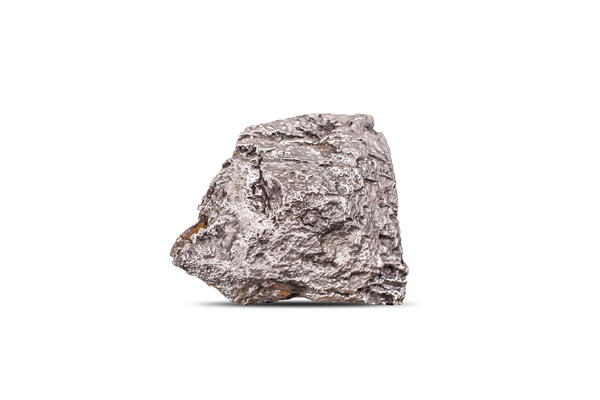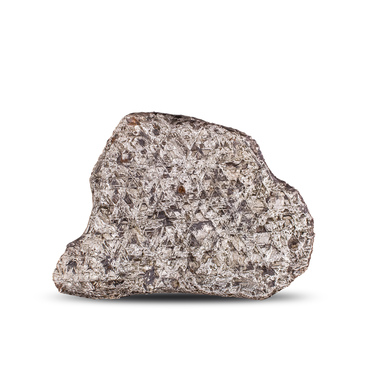This iron meteorite was named after the village of Dronino in the Ryazan Oblast, where its fragments were discovered. The Dronino meteorite may be one of the most ancient meteorites discovered in Russia. It fell near the town of Kasimov, which was founded in 1152 by Prince Yuri Dolgorukiy. The celestial object left a 30-meter-wide crater in the ground. Such an event near a large town could not go unnoticed. However, no known letopis (Russian chronicle) mentioned it. That is why scientists suggested that the meteorite fell much earlier than the 12th century when people had not yet lived in this area.
The Dronino meteorite is classified as an ataxite. Ataxites are relatively rare celestial objects, which contain up to 13% of nickel. They do not have the so-called Widmanstätten patterns, the characteristic geometric patterns on their surface.
Muscovite Oleg Guskov discovered the first fragment of the Dronino meteorite in the summer of 2000. He went into the forest to collect mushrooms and found a rusty piece of metal which weighed about 40 kilograms. Guskov gave a fragment of it for analysis to the laboratory of Meteoritics at the Vernadsky Institute of Geochemistry and Analytical Chemistry. There, scientists established that the metal truly was a meteorite.
In the spring of 2003, a scientific expedition with metal detectors set off near the village of Dronino. The researchers managed to find several thousand meteorite fragments; their total mass was about three tons. The largest of them weighed between 250 and 300 kilograms.
Up to 500 meteorites of various sizes fall to Earth annually, but only 10-15 of them could be discovered. The majority of them fall into the oceans or in the areas people do not live in — the deserts, tundra, impenetrable forests.
In terms of composition, meteorites are classified into stone, iron, or mixed. Stone meteorites are discovered most often; their structure resembles the Earth’s crust, while the iron ones probably used to be fragments of nuclei of minor planets. It is a tradition to name meteorites after the place where they were found or after the nearest settlement.
The most famous meteorite which fell on the territory of Russia is the Sikhote-Alin meteorite. It fell in the Ussuri taiga on February 12, 1947. More than six thousand of its fragments with a total weight of about 100 tons were found over an area of 35 square kilometers.
The Dronino meteorite is classified as an ataxite. Ataxites are relatively rare celestial objects, which contain up to 13% of nickel. They do not have the so-called Widmanstätten patterns, the characteristic geometric patterns on their surface.
Muscovite Oleg Guskov discovered the first fragment of the Dronino meteorite in the summer of 2000. He went into the forest to collect mushrooms and found a rusty piece of metal which weighed about 40 kilograms. Guskov gave a fragment of it for analysis to the laboratory of Meteoritics at the Vernadsky Institute of Geochemistry and Analytical Chemistry. There, scientists established that the metal truly was a meteorite.
In the spring of 2003, a scientific expedition with metal detectors set off near the village of Dronino. The researchers managed to find several thousand meteorite fragments; their total mass was about three tons. The largest of them weighed between 250 and 300 kilograms.
Up to 500 meteorites of various sizes fall to Earth annually, but only 10-15 of them could be discovered. The majority of them fall into the oceans or in the areas people do not live in — the deserts, tundra, impenetrable forests.
In terms of composition, meteorites are classified into stone, iron, or mixed. Stone meteorites are discovered most often; their structure resembles the Earth’s crust, while the iron ones probably used to be fragments of nuclei of minor planets. It is a tradition to name meteorites after the place where they were found or after the nearest settlement.
The most famous meteorite which fell on the territory of Russia is the Sikhote-Alin meteorite. It fell in the Ussuri taiga on February 12, 1947. More than six thousand of its fragments with a total weight of about 100 tons were found over an area of 35 square kilometers.



